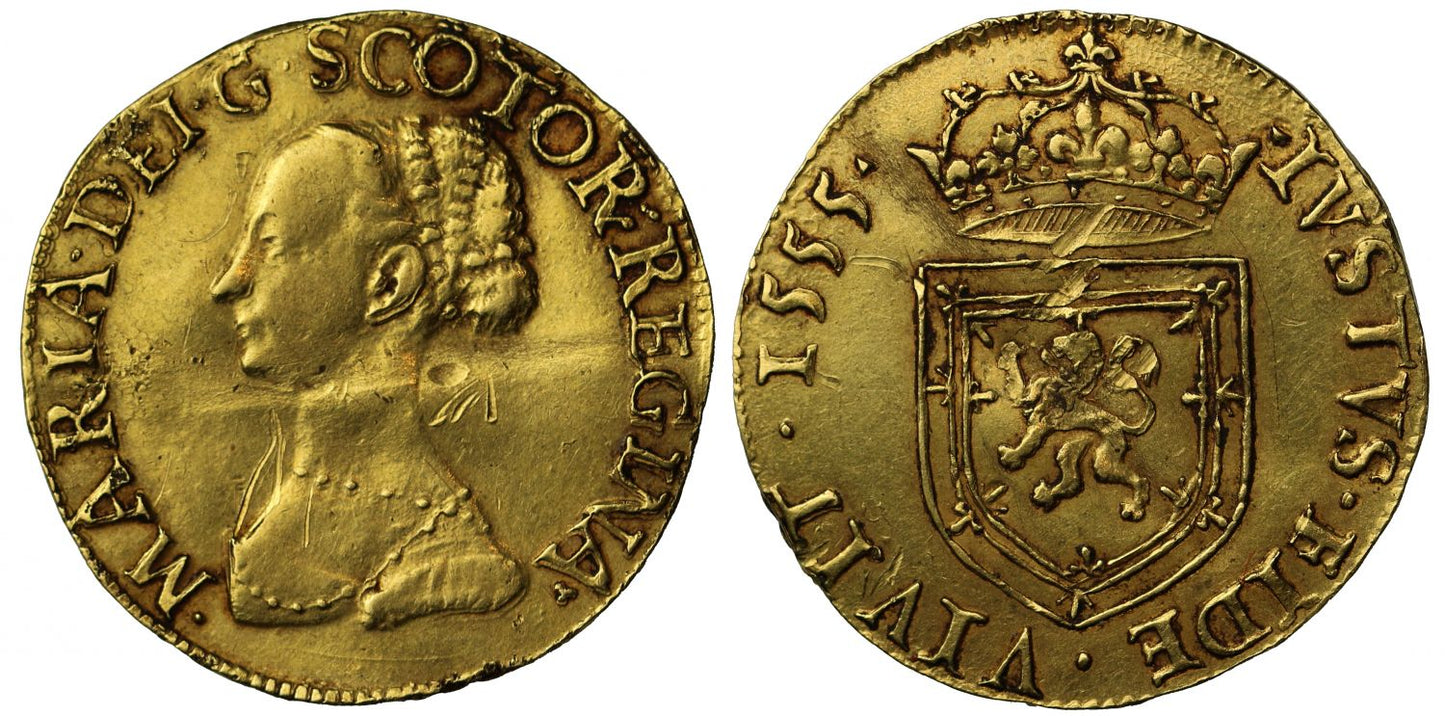FAQs
What makes a coin valuable?
I have coins to sell, what’s the next step?
How will my purchases be shipped?
What happens if I’m not entirely happy with my purchase?
Scotland, Mary Queen of Scots 1555 gold Three Pounds, portrait with necklace
Scotland, Mary Queen of Scots (1542-67), gold Ryal of Three Pounds, 1555, portrait facing left with hair filleted and wearing pearl necklace, abbreviated Latin legend and outer beaded circle surrounding, commences lower left .MARIA. DEI. G. SCOTOR: REGINA:. trefoil at end of legend, rev. crowned Scottish Arms of lion rampant in shield, crown with shaded interior, date and abbreviated Latin legend and outer beaded circle surrounding, commences upper right .IVSTVS. FIDE. VIVIT. 1555., weight 7.67g (Burns 2 fig 819; cf. SCBI 58 [Edinburgh], 269-70, emblematic trefoil stops after Regina; cf. SCBI 35 [Ashmolean], 990-95; SCBI 71;549 Stewartby; Murray dies E/2; Fr.33; S.5397). An exceptional piece, the finest we have encountered of this usually worn distorted issue, one slight crease, short scratch before bust, a few digs behind neck, reverse with further digs at top of shield and interior of crown, otherwise toned extremely fine for issue and extremely rare.
The abbreviated Latin legends translate as on the obverse "Mary, by the Grace of God, Queen of Scotland" and on the reverse "The just man lives by faith" taken from the Bible.
A great deal of the gold in the coinage of Scotland at this period was mined locally principally from Crawford Moor, when nuggets from 2 grams to 30 ounces were discovered in the reign of James I (1406-37) . Mary abdicated from the Scottish throne in 1567 in favour of her young son James VI, who later united the Kingdom of Scotland with England as Great Britain, and as King James I of England.
These Ryal gold pieces usually survive in quite poor or mounted condition but as the largest gold portrait coin of Mary Queen of Scots are very valuable. We note this piece is finer than the plate coin in the Standard Catalogue and is better than the die duplicate in the Lockett Collection (lot 309) and the only other we can trace of this combination is in the Royal Mint Museum. Col. J K R Murray studied this coinage and published a paper listing all the die combinations in the Numismatic Chronicle of 1979, page 160 - Scottish Gold Coinage 1555-58. This coin is the first we can recall seeing showing a full necklace and much of the hair and facial detail, despite the crease and digs, a true Renaissance portrait.
Provenance:
Ex C.G.B. France, e-monnaies (Numismatique Paris) - Auction 27th September 2016, lot 420.
FAQs
What makes a coin valuable?
I have coins to sell, what’s the next step?
How will my purchases be shipped?
What happens if I’m not entirely happy with my purchase?













